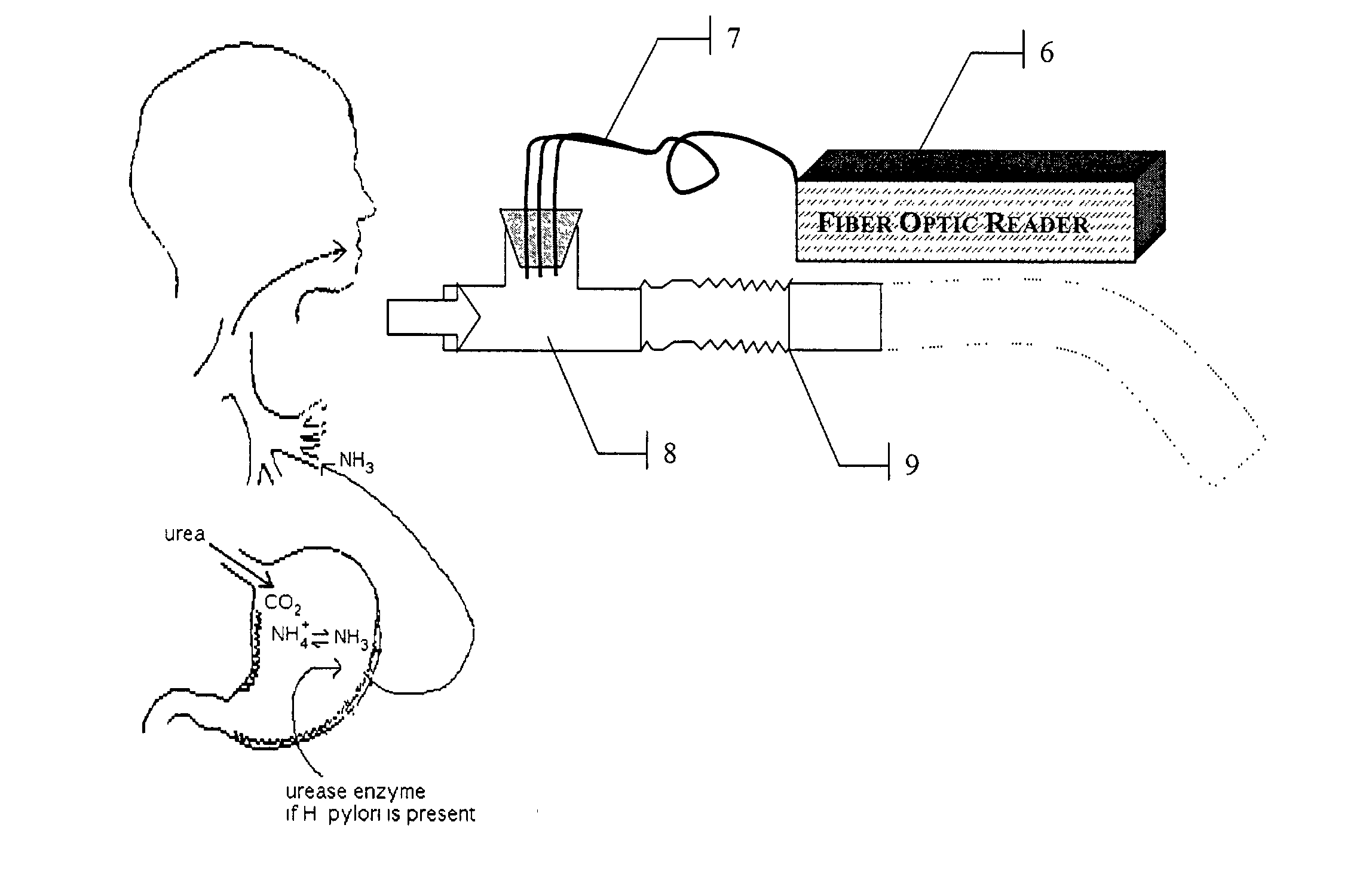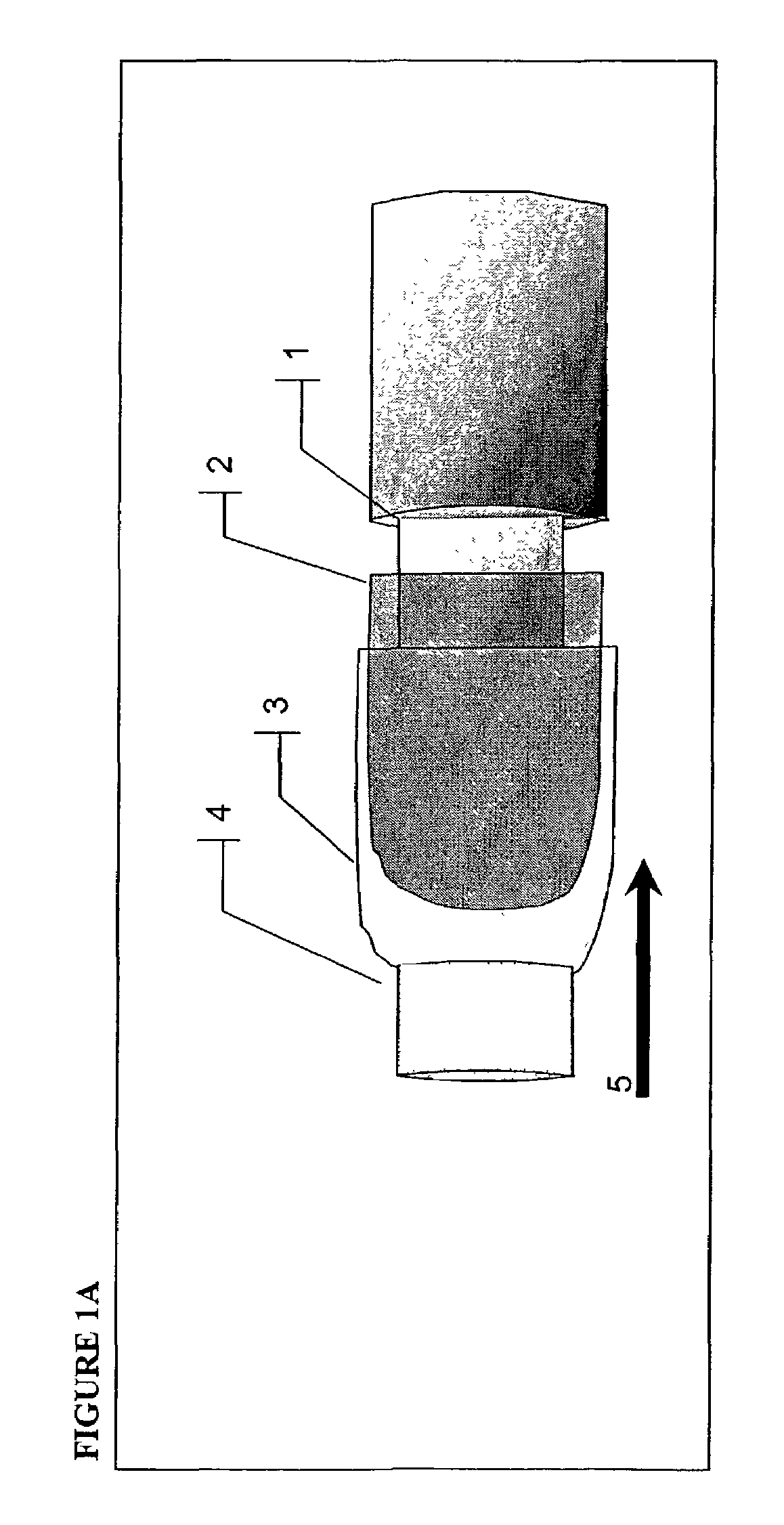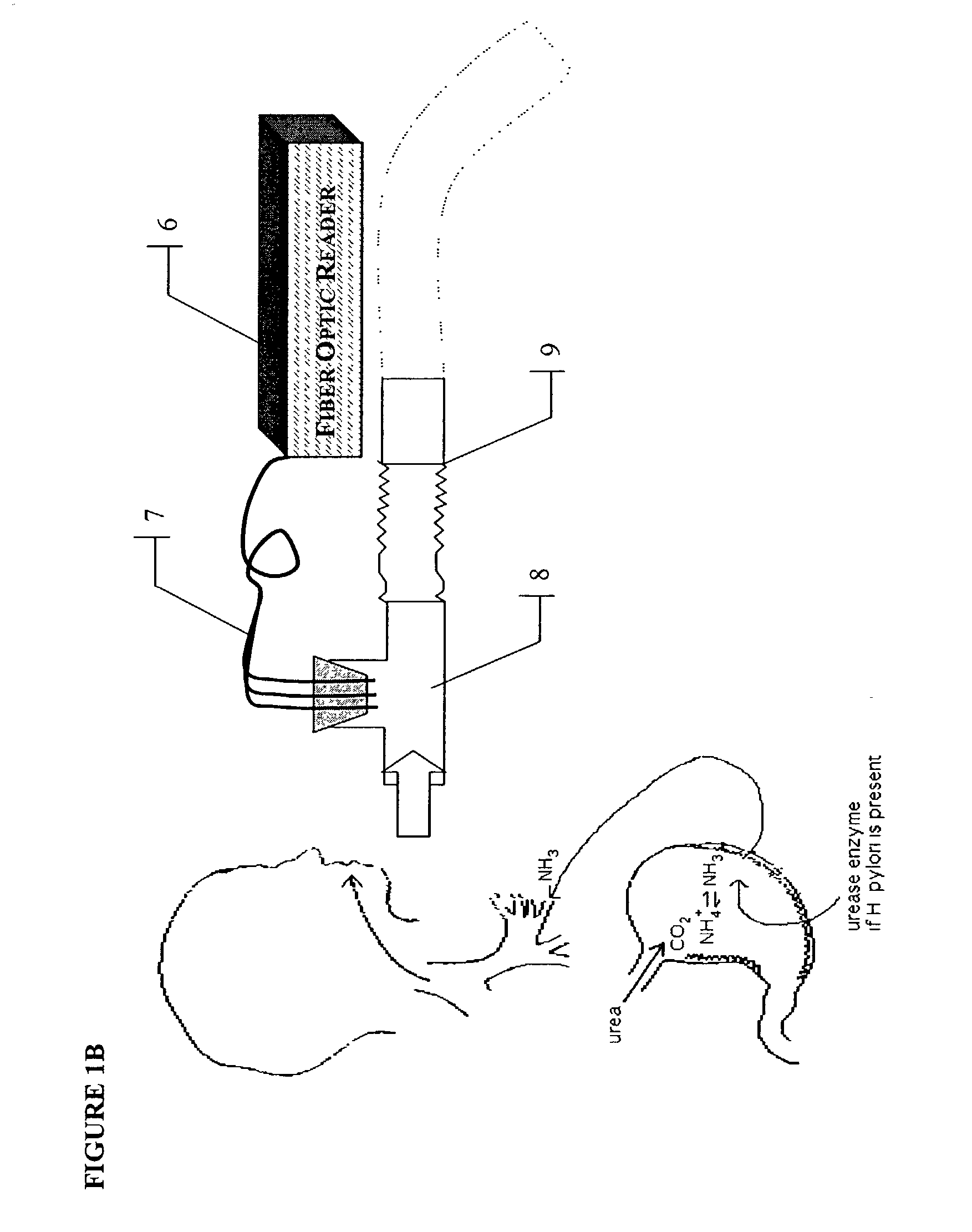Method for diagnosis of helicobacter pylori infection
a technology for helicobacter pylori and infection, applied in the field of helicobacter pylori infection diagnosis, can solve the problems of capital equipment and per-patient test cost, inability to prove the reliability of general practitioners' offices, and no test method for i>h, and achieve the effect of simple, rapid and non-invasive diagnostic tes
- Summary
- Abstract
- Description
- Claims
- Application Information
AI Technical Summary
Benefits of technology
Problems solved by technology
Method used
Image
Examples
example 1
Preparation of Ammonia Sensors for ABT and Optical Sensor Instrumentation
[0046]The following examples describe the preparation of an ammonia sensitive optical sensor useful for the direct determination of breath ammonia measures.
[0047]In one embodiment, the ABT sensor composition is made from an ammonia sensitive indicator dye and a solid phase, for example, a PTFE solid phase in a film form. In one aspect, the sensor compositions are constructed by administering ammonia-sensitive indicator dye(s) in a non-aqueous solvent to a solid-phase PTFE substrate such that the dye is deposited on the solid phase in a form insoluble to aqueous-based solvents. Further, the characteristics of a PTFE film or a porous membrane form are such that it is permeable to gaseous ammonia.
[0048]Optical sensor films for ABT were prepared by dissolving the optical dyes bromocresol-green (BCG) or bromophenol-blue (BPB) in methanol at a concentration of 0.75 mg / L. Other dyes, such as but not limited to, any fl...
example 2
Representative Optical Sensor and Instrument Responses to Ammonia
[0055]To establish the sensor responses to ammonia, a BCG and BPB sensor were connected to appropriate modules and then exposed to 0 ppm, 1 ppm, 4 ppm, 6 ppm and 200 ppm of ammonia in water saturated air. The 200 ppm sample saturates the BPB and BCG dye response ranges and was included only to show a full-range response. The individual channel signal levels at the two wavelengths were recorded. Representative optical signal and Ratio plots for these two sensors are shown in FIGS. 2a–d. As predicted from the BPB and BCG pK's, the BPB sensor demonstrates more of its responsivity in the 0–1 ppm range than the BCG sensor that shows a more extended response over the range of 0–6 ppm.
example 3
Representative H. pylori Positive and Negative Subject Ammonia Breath Test Optical Sensor Responses
[0056]Thirteen volunteers were tested for the presence of H. pylori infection using conventional 14C-urea breath test diagnostic procedures (Ballard Medical, Draper, Utah) in order to classify their clinical status based on current medical practice. Current practice requires subjects fast overnight (typically 8–14 hours) prior to ingesting the 14C-urea capsule and subsequent collection of the subject's breath. A similar fasting regimen was used for the ammonia breath test (ABT). The breath samples were analyzed for the presence of 14C using a scintillation counter. A positive urea breath test was defined as breath 14CO2 excretion greater than 200 dpm, an indeterminate test as breath 14CO2 excretion of 50–200 dpm, and a negative test as 14CO2 excretion less than 50 dpm. Five subjects were found positive for H. pylori and eight were identified as negative for the organism as measured by ...
PUM
| Property | Measurement | Unit |
|---|---|---|
| concentration | aaaaa | aaaaa |
| thicknesses | aaaaa | aaaaa |
| concentrations | aaaaa | aaaaa |
Abstract
Description
Claims
Application Information
 Login to View More
Login to View More - R&D
- Intellectual Property
- Life Sciences
- Materials
- Tech Scout
- Unparalleled Data Quality
- Higher Quality Content
- 60% Fewer Hallucinations
Browse by: Latest US Patents, China's latest patents, Technical Efficacy Thesaurus, Application Domain, Technology Topic, Popular Technical Reports.
© 2025 PatSnap. All rights reserved.Legal|Privacy policy|Modern Slavery Act Transparency Statement|Sitemap|About US| Contact US: help@patsnap.com



